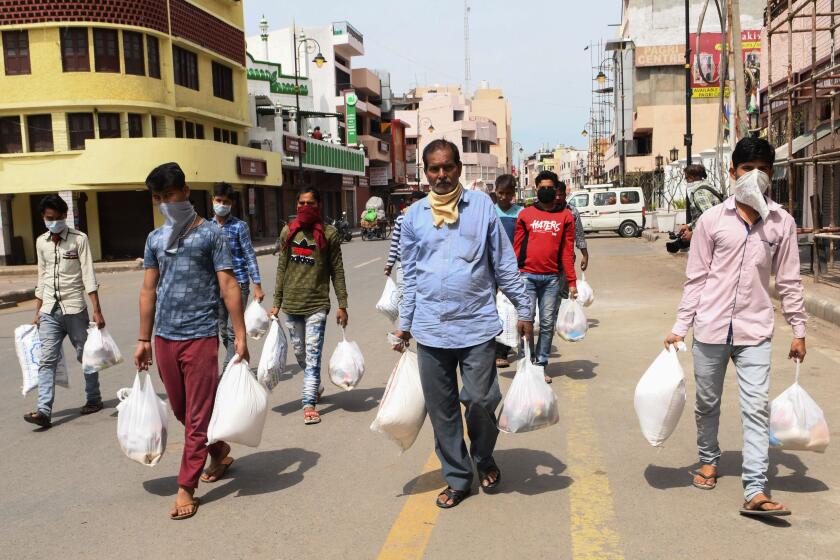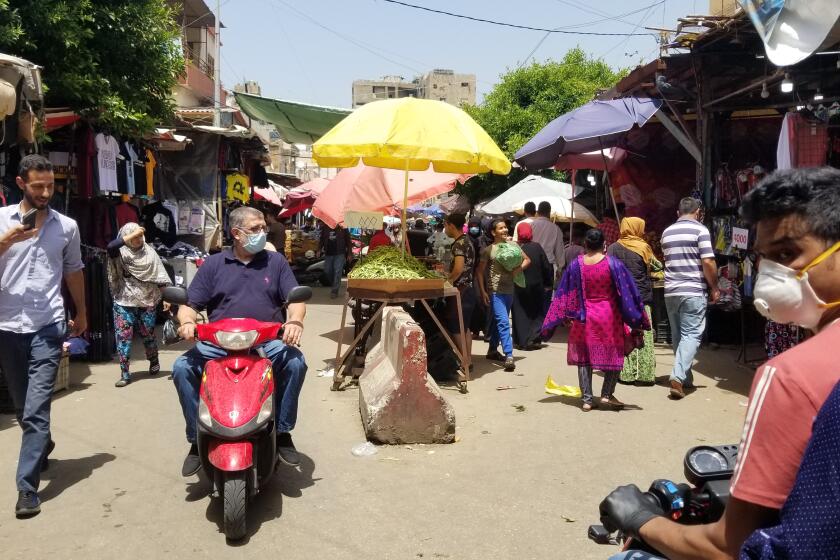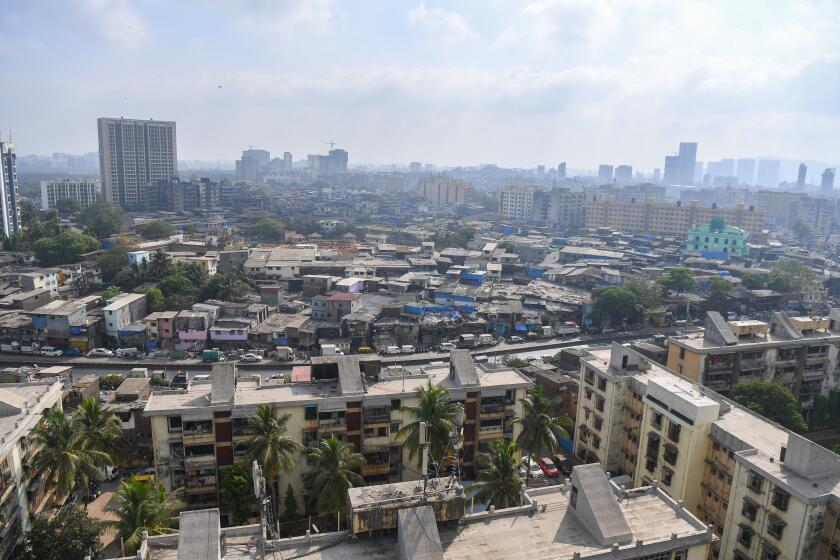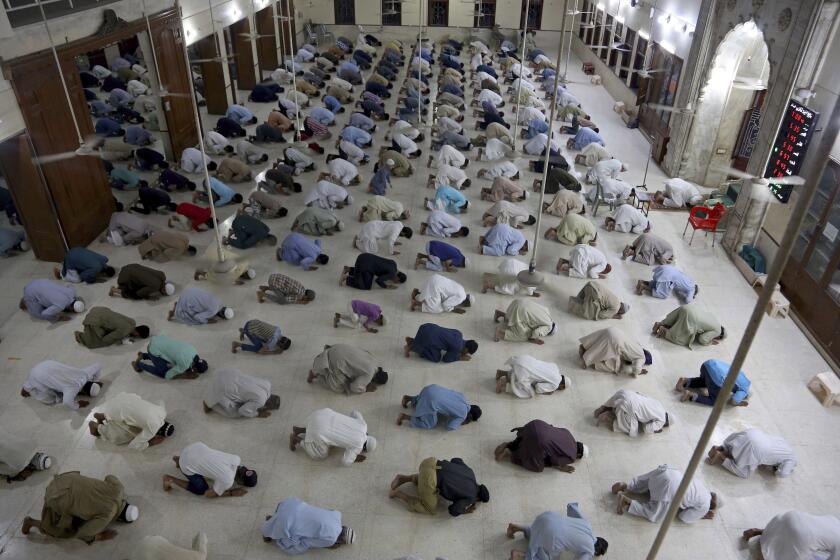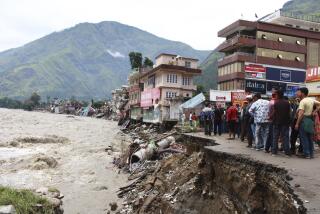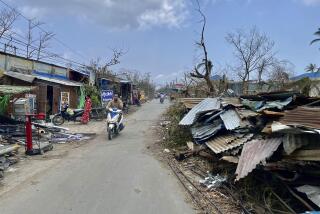Powerful cyclone hits India and Bangladesh as 2.6 million people head to shelters
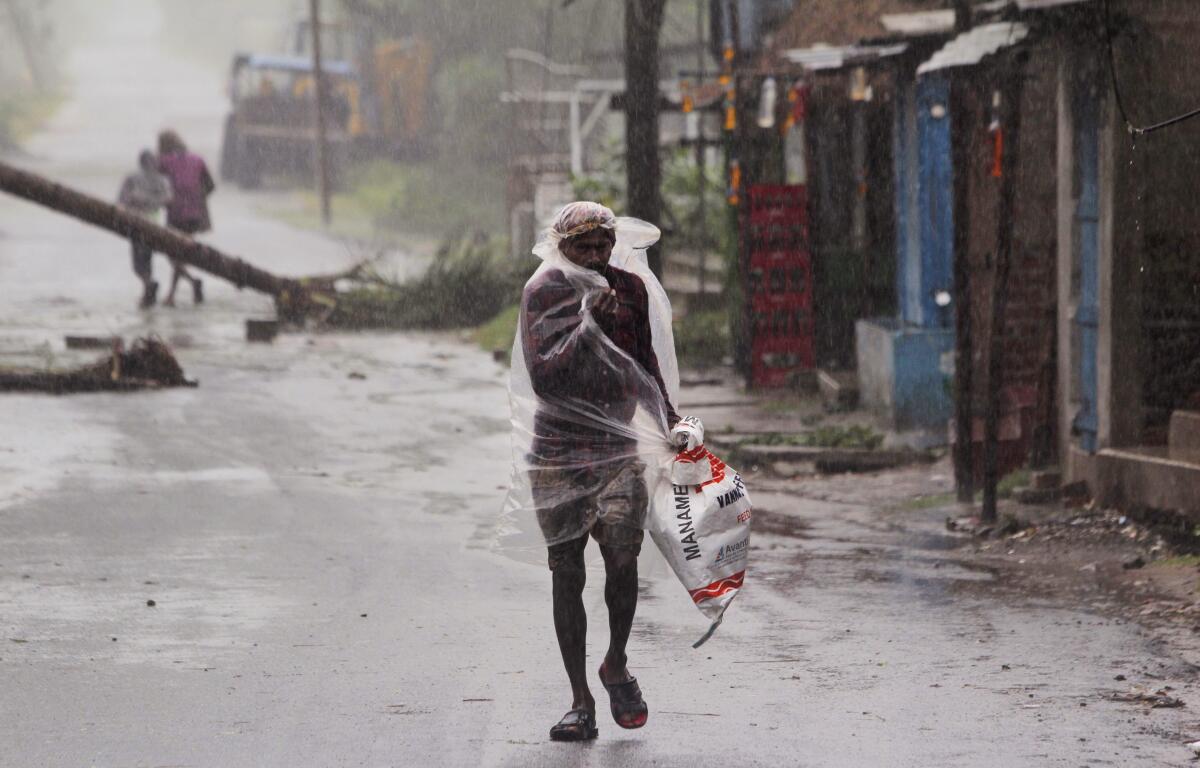
NEW DELHI — A powerful cyclone plowed inland Wednesday along the coastline of India and Bangladesh, where more than 2.6 million people fled to shelters in a frantic evacuation made all the more challenging by the coronavirus pandemic.
Cyclone Amphan, the equivalent of a Category 3 hurricane, was packing winds of up to 105 mph and maximum gusts of 118 mph. Although the cyclone was expected to weaken as it moved toward Bangladesh, authorities warned that it could cause extensive damage to flimsy houses and a storm surge could push seawater 15 miles inland, flooding cities including Kolkata (formerly Calcutta).
The cyclone washed away bridges connecting Indian islands to the mainland and left many areas without electricity or phone service, West Bengal Chief Minister Mamata Banerjee told reporters Wednesday evening. She said that, while a clearer picture of the devastation would emerge by Thursday, there had been at least seven deaths.
“We are facing three crises: the coronavirus, the thousands of migrants who are returning home and now the cyclone,” said Banerjee, who is an opposition leader and one of the fiercest critics of Indian Prime Minister Narendra Modi.
The southern districts of the state were worst affected, officials said, adding the crisis was far from over, with strong winds likely to continue until early Thursday morning. Heavy rainfall was forecast for many parts of the state in the coming week.
As the cyclone hit the coast, coconut trees swayed wildly, electric poles lay scattered on the roads of Kolkata, rain pounded fishing villages and rivers surged as the storm battered the coast. Thousands of homes were damaged and river embankments were washed away.
“The next 24 hours are very crucial. This is a long haul,” said M. Mohapatra, India’s chief meteorologist.
The cross-border region is home to 58 million people who are among the most vulnerable in South Asia. They include poor fishing communities in the Sunderbans and more than 1 million Rohingya refugees living in crowded camps in Cox’s Bazar in Bangladesh.
A woman crushed by a tree and a 13-year-old girl killed near Kolkata were among the first deaths reported in India before phone connectivity snapped. In southern Bangladesh, a volunteer on a cyclone preparedness team drowned when a boat capsized in a canal.
“This is quite a double whammy,” said T. Sundaramanan, a health systems consultant in Pondicherry in southeast India. “This pandemic is a new spin on it.”
A three-week lockdown affecting 1.3 billion people has unleashed chaos as stranded migrant workers sleep in streets and police beat curfew-breakers.
He said the cyclone could have devastating consequences for India’s fight against the pandemic, possibly causing it to spread to more remote communities.
“Our responses will be crippled. Our supply lines will be threatened. How will we move in relief supplies over land if all of it is in lockdown?” he said.
The cyclone made landfall between Digha, a seaside resort in West Bengal, and the Hatiya Islands in Bangladesh. The eye of the storm was likely to pass through the Sundarbans, one of the largest mangrove forests in the world, India’s meteorological department said.
The forests could act as a vital line of defense by dissipating some of the energy from the waves that would otherwise crash into the coastline, said K.J. Ramesh, the department’s former chief.
People living in isolated mangrove forest communities were vulnerable. Ghosh said their houses could be inundated and that mud homes had already washed away.
Bangladesh has evacuated around 2.4 million people to safety. India’s West Bengal state moved nearly 300,000 and Odisha state another 148,486, officials said.
With 10 million people around the world packed into refugee camps and settlements, advocates fear the onset of an undetected coronavirus crisis.
In refugee camps in Cox’s Bazar, where the first 10 coronavirus cases were confirmed last week, authorities and U.N. workers prepared 50 shelters and assigned 256 volunteer units.
Areas at risk of landslides were stabilized with bamboo and concrete walls. But the combination of the virus and cyclone could lead to a “new humanitarian crisis,” said Manuel Pereira, deputy chief of mission for the International Organization for Migration in Bangladesh.
“We know that if people are forced to seek communal shelter, they’ll be unable to maintain physical distancing and run the risk of contracting or transmitting the virus,” Pereira said.
Masks and hand sanitizer were hastily added to the emergency items stocked in storm shelters. But the COVID-19 pandemic has made it harder to save lives.
Sobrato Das, a fisherman on Mousuni Island in India, close to the Sundarbans, described the shelters as crowded and said “very few people are wearing masks.” He said children were crying and women desperately tried to cover their faces with their saris while trying to maintain some distance from each other.
One Indian family struggles to protect itself from the coronavirus in one of Asia’s largest slums, the latest calamity to threaten Mumbai’s underclass.
Some shelters in West Bengal were used for quarantining COVID-19 patients and migrant workers traveling after India’s lockdown was eased, officials said. Some schools are now being used to shelter people, news reports said.
The West Bengal government has also asked that special trains for migrant workers be suspended, Chief Minister Mamata Banerjee said.
Some in the cyclone’s path saw a choice between the coronavirus and the storm.
Many in the seaside resort town of Digha feared going to the shelters, fisherman Debasis Shyamal said. “They have been home for weeks, and are afraid of going into a crowd where they could get infected,” he said.
The densely populated city of Kolkata, which has nearly 1,500 cases of the coronavirus, is likely to see flooding, while some centuries-old buildings in the northern half of the city could collapse due to the strong winds.
Breaking News
Get breaking news, investigations, analysis and more signature journalism from the Los Angeles Times in your inbox.
You may occasionally receive promotional content from the Los Angeles Times.
In Sathira district in Bangladesh, local chief government administrator S.M. Mostafa Kamal said evacuees were given dry food, baby food and medicine. He said they were distributing masks and other safety equipment to keep the coronavirus from spreading during their stay in thousands of shelters.
The cyclone is occurring during the Islamic holy month of Ramadan, and reports from Muslim-majority Bangladesh said many villagers were fasting all day Tuesday, then eating at night before heading for the shelters early Wednesday.
The region is no stranger to devastating cyclones. It is not the frequency of the cyclones but the intensity of their wind speeds that have increased because of climate change and global warming, said K.J. Ramesh, former chief of India’s meteorological department.
This has to do with the temperature of the sea’s surface. Warm water is the fuel for cyclones. It is where storms get their energy, and the amount of heat trapped in the top 700 meters of the ocean has increased. “As a result, cyclones are intensifying faster than before,” he said.
Muslims around the world are trying to maintain the cherished rituals of Ramadan, Islam’s holiest month, without further spreading the coronavirus.
Authorities suspended all river transportation, including ferry service, across Bangladesh, a delta nation crisscrossed by more than 130 rivers.
The cyclone had winds of 136-142 mph out at sea. It is the second super cyclone on record that has formed over the Bay of Bengal, said Mrutyunjay Mohapatra, India’s meteorological chief. The first was a devastating 1999 cyclone in Odisha state that left nearly 10,000 people dead.
“This type of cyclone can be disastrous,” Mohapatra said.
Fishing trawlers and boats in the Bay of Bengal have been told to take shelter until further notice.
After reaching land, the cyclone is expected to move away fast and weaken by Thursday.
More to Read
Sign up for Essential California
The most important California stories and recommendations in your inbox every morning.
You may occasionally receive promotional content from the Los Angeles Times.
